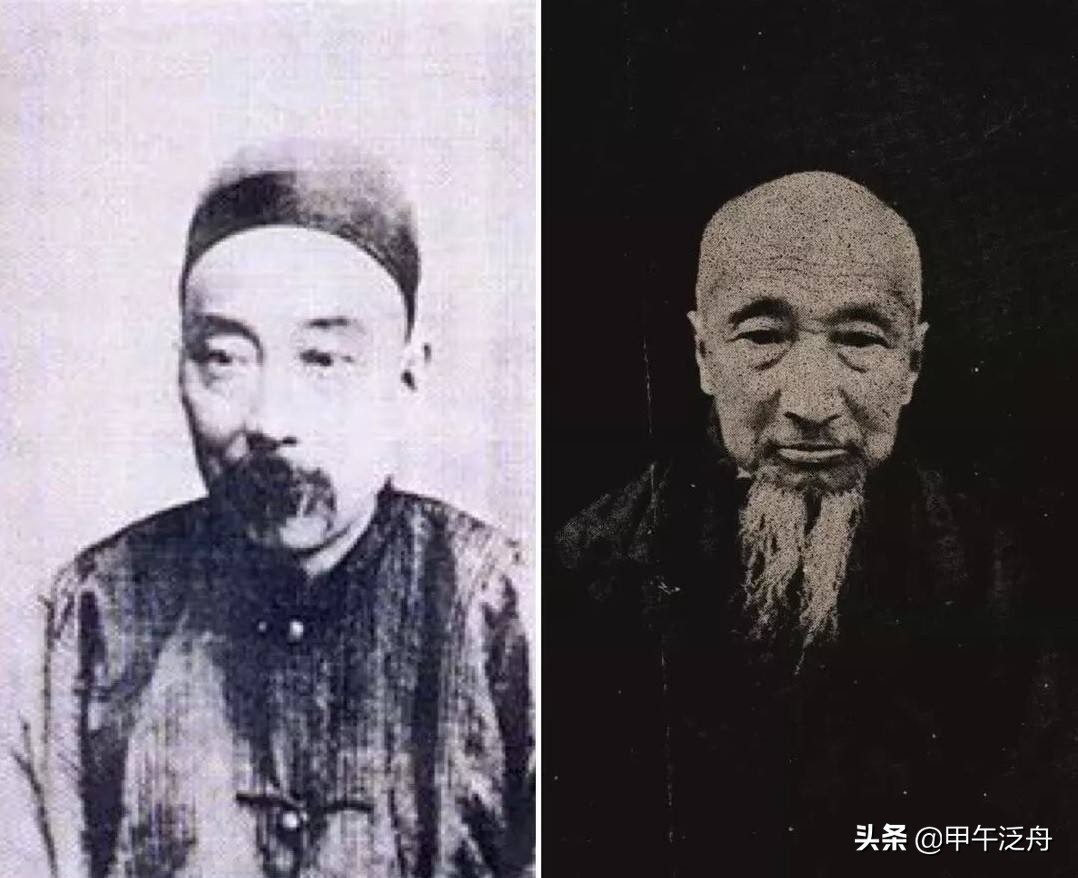June 22-27, 1884, from May 29 to the fifth day of the leap month of May in the old calendar. In 1883, when the Sino-French War broke out and neighboring Japan took advantage of the opportunity to premeditate, Li Hongzhang deeply felt that it was particularly urgent to speed up the construction of the Beiyang Marine Division, and the coastal defense of the Southern and Northern Oceans must be developed in a coordinated manner. Against this background, in mid-June 1884, Li Hongzhang presented the Guangxu Emperor with the Guangxu Emperor to play the beiyang coastal defense construction, but because of his old age and frail health, his wisdom was short,so he wanted to invite Zhang Zhidong, Wu Dayeng, and Zhang Peilunchi to Lushun, Yantai, and Weihai to tour the Beiyang coastal defense together in order to pool the results of wisdom.

Wu Dayi
Li Hongzhang's request was soon approved by the Guangxu Emperor, and on June 22, 1884, together with Zhang Zhidong, Wu Dayun, and Zhang Peilun, he began to tour the haikou of the Beiyang Sea. Ding Ruchang, commander-in-chief of Tianjin Town, was ordered to lead "Chao Yong," "Yang Wei," "Wei Yuan," and "Kang Ji" to hold exercises and shoot targets, and his "wild goose marching array" and "fish penetrating array," the various orders of sail cables and lamp flags, and the method of firing guns and cannons can all be neatly and flexibly changed. Li Hongzhang was particularly satisfied with this, and it also opened the eyes of Zhang Zhidong, Wu Dayi and Zhang Peilun.
On June 25, Li Hongzhang and his party arrived at Weihaiwei, which was also Li Hongzhang's second tour of Weihaiwei. Together with Zhang Zhidong, Wu Dayeng, and Zhang Peilun, he inspected the rapid progress of logistics support projects such as the LiugongDao Machinery Bureau and the Tun Coal Institute, and also reviewed the torpedo boat training exercises.
The torpedo boat piloted by Ben Shuiyong and the craftsmen who participated in the drill was "as fast as the wind", and when the torpedo was cast, it was "operated in unison, and the shooting and release were accurate". Li Hongzhang and his party were full of admiration and unanimously praised this as a "weapon to control the enemy."
By inviting Zhang Zhidong, Wu Dayeng, and Zhang Peilun to tour the Beiyang Coastal Defense together, Li Hongzhang took advantages and existing problems in the construction of the Beiyang Coastal Defense Base to the imperial court on the seventh day of the first month of leap May (June 29), forming a collective opinion on the inspection situation, saying that Liugong Island was located in the Wei Bay and was suitable for the construction of a naval base.
Liugong Island Beiyang Coastal Defense Base
However, Weihaiwei "is bordered by two mouths in the north and south of the sea, the ground is wide and the water is deep, if the platform is built and guarded", the amount of engineering is large, and the transportation is inconvenient, especially "the cost is extremely huge, and it is not easy to raise funds for a while". Due to the strong conservative forces opposing the construction of the navy inside and outside the Qing court at that time, Li Hongzhang replaced individual opinions with collective wisdom, increased the strength to compete with the conservatives, and effectively promoted the construction of the Beiyang Coastal Defense Base on Liugong Island.
On the same day, Ding Ruchang arrived in Weihai from Yantai with a ship, ordering all the ships to make preparations for going to Jiaozhou.
June 22, 1889, may 24 in the old calendar. Ding Ruchang, admiral of the Beiyang Navy, and Wu Ankang, commander-in-chief of the Nanyang Naval Division, led the fleet to Yantai.
June 22, 1894, May 19, old calendar. Japanese Foreign Minister Mutsu Muneko set a trap and deliberately submitted a government document written in Chinese to Wang Fengzao, the Qing court's envoy to Japan, rejecting the Qing government's proposal to withdraw troops from Both China and Japan at the same time.
The next day, the Japanese telecommunications department successfully intercepted Wang Fengzao's telegram reporting the document to Prime Minister Yamen. With his previous experience in deciphering, combined with the method of making secret codes by the Qing people in his early years, and carefully comparing and studying the content structure of Wang Fengzao's secret electricity, Sato finally successfully deciphered the telecommunications code of the QingGuo Legation!
Minister in Japan Wang Fengzao
On the same day, Lin Tai, the commander-in-chief of the left wing of the Beiyang Navy and the "Zhenyuan" ship pipe belt, led the "Zhenyuan", "Chaoyong", and "Guangbing" to Incheon, and about 600 soldiers did not land.